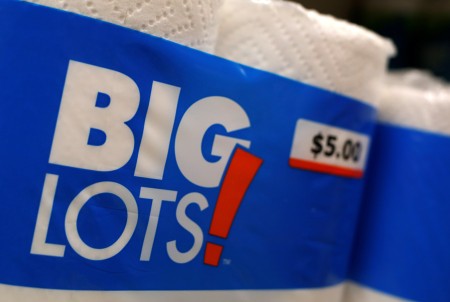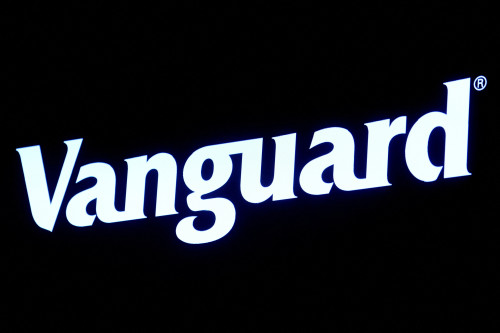By Lucia Mutikani
WASHINGTON (Reuters) – U.S. consumer prices rose modestly in June and registered their smallest annual increase in more than two years as inflation subsided further, but probably not fast enough to dissuade the Federal Reserve from resuming raising interest rates this month.
The report from the Labor Department on Wednesday also showed underlying consumer prices posting their smallest monthly gain since August 2021. The considerable slowdown in underlying inflation sparked a rally on the stock and bond markets, with investors convinced the U.S. central bank’s fastest monetary policy tightening cycle since the 1980s was drawing to a close.
“Inflation isn’t dead, but the extraordinary pandemic push on prices from shortages and shift to stay-at-home purchases is clearly over, and the Fed for the first time has the upper hand in its inflation fight,” said Christopher Rupkey, chief economist at FWDBONDS in New York.
The CPI gained 0.2% last month after edging up 0.1% in May. Shelter, which includes rents, accounted for 70% of the rise in the CPI last month. There were also increases in motor vehicle insurance as well as gasoline prices, which rose 1.0%. These gains offset a decrease in the prices of used cars and trucks.
Food prices ticked up just 0.1%. Grocery food prices were unchanged amid further declines in the cost of eggs as well as cheaper meat and fish, which offset a 0.8% increase in fruits and vegetables. But it still cost more to eat out.
In the 12 months through June, the CPI advanced 3.0%. That was the smallest year-on-year increase since March 2021 and followed a 4.0% rise in May.
Economists polled by Reuters had forecast the CPI rising 0.3% last month and climbing 3.1% year-on-year.
Annual inflation is a third of what it was last June, when prices surged 9.1%, which was biggest increase since November 1981 and marked a peak in the year-on-year CPI rate.
The year-on-year CPI is slowing in part as last year’s large rises drop out of the calculation.
Cooling inflation also meant increased purchasing power for consumers. Inflation-adjusted weekly earnings for private workers rebounded 0.5% and were up 0.6% on a year-on-year basis.
President Joe Biden said the inflation and wages data were evidence that his economic policy, dubbed by economists as “Bidenomics” was delivering results and vowed to “continue to fight for lower costs for families every day.”
Nevertheless, inflation remains well above the Fed’s 2% target, with the labor market still tight. Though employment gains were the smallest in 2-1/2 years in June, the unemployment rate fell close to historically low levels and wage growth was strong. Still, retreating inflation raised cautious optimism that the economy could avoid a much-anticipated recession.
It also bolstered the argument against further rate hikes. The U.S. central bank has signaled two rate hikes this year, including the one expected this month.
The moderation in price pressures was also acknowledged in the Fed’s Beige Book report on Wednesday, which found “contacts in some districts noted reluctance to raise prices because consumers had grown more sensitive to prices, while others reported that solid demand allowed firms to maintain margins.”
Stocks on Wall Street were trading higher. The dollar fell against a basket of currencies. U.S. Treasury prices rose.
CORE INFLATION SLOWING
Financial markets have priced in a 25 basis points rate increase at the Fed’s July 25-26 policy meeting, according to CME’s FedWatch tool.
The central bank skipped raising rates in June after hiking its policy rate by 500 basis points since March 2022.
“We have a lot more data between now and September’s meeting,” said Chris Zaccarelli, chief investment officer at Independent Advisor Alliance in Charlotte, North Carolina. “But the evidence is building that the Fed will ‘watch and wait’ after they raise rates this month.”
The improving inflation environment was underscored by a moderation in the pace of increase in underlying prices.
Excluding the volatile food and energy categories, the CPI increased 0.2% in June, the smallest gain since August 2021. It was the first time in six months that the so-called core CPI did not post monthly gains of at least 0.4%.
The core CPI was lifted by a 0.4% increase in shelter costs.
Owners’ equivalent rent (OER), a measure of the amount homeowners would pay to rent or would earn from renting their property, climbed 0.4%. That was the smallest rise in the OER since December 2021 and followed a 0.5% increase in May. Prices for hotel and motel rooms dropped 2.3%.
The cost of motor vehicle insurance jumped 1.7%, while prices for apparel rose 0.3%. But prices for used cars and trucks dropped 0.5% and the cost of new cars was unchanged. As a result, core goods prices fell 0.1% after advancing 0.6% in May.
Airline tickets were 8.1% cheaper, posting the biggest drop in nearly a year. There were also decreases in the prices of communication services and household furnishings and operations.
Healthcare costs were unchanged as were the prices of prescription medication.
Services prices rose 0.3%. They rebounded 0.2% excluding rents, reversing the prior month’s decline.
In the 12 months through June, the core CPI rose 4.8%. That was the smallest year-on-year gain since October 2021 and followed a 5.3% increase in May.
Core inflation is expected to continue receding in the months ahead, with the labor market cooling and independent measures showing rents on a downward trend. Rent measures in the CPI tend to lag the independent gauges by several months.
The Institute for Supply Management’s measure of prices paid by services businesses for inputs dropped in June to the lowest level since March 2020. This measure is seen as a good predictor of personal consumption expenditures inflation, closely tracked by policymakers.
“For the first time in this rate-hike campaign, the light of price stability is starting to shine more brightly at the end of the tunnel,” said Michael Gregory, deputy chief economist at BMO Capital Markets in Toronto.
(Reporting by Lucia Mutikani; Editing by Chizu Nomiyama and Andrea Ricci)




